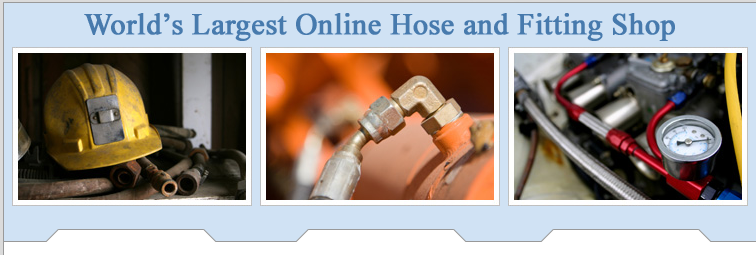After last week's post, I have gotten questions about material types for seals.
The four most commonly used materials for sealing applications are polyurethane (PU), acrylonitrile-butadiene-rubber (NBR), fluoro-rubber (FKM), and polytetrafluoroethylene (PTFE).
Polyurethane (PU)
Polyurethane is an organic material of high molecular weight whose chemical composition is characterized by a large number of urethane groups. Urethanes belong to the thermoplatic elastomers (TPE) family and close the gap between thermoplastic and elastomeric materials regarding hardness, deforming behavior and consistency. Within certain temperature limits, polyurethane possesses the elastic characteristics of rubber combined with the advantages of a rigid plastic.
The composition of the material is determined by three components: polyol; diisocyanate; and a chain extender. The type and amount of these materials used, and the reaction conditions, are decisive in determining the properties of the resulting polyurethane material. In general, polyurethanes possesses the following properties:
- High mechanical strength
- Very high tensile
- Good abrasion resistance
- Good flexibility
- Modulus of elasticity which can be varied within wide limits
- Wide range of hardness values, while retaining good elasticity
- Very good resistance to ozone and oxygen
- Outstanding resistance to abrasion and tear
- Good resistance to oil and gasoline
Temperature range for use: -30° to 80° C; high performance types (compounds) up to 110° C in mineral oils (long term exposure temperature).
Acrylonitrile-Butadiene-Rubber (NBR)
NBR is a polymer of butadiene and acrylonitrile. The acrylonitrile (ACN) component affects the following properties of the NBR:
- Elasticity
- Cold flexibility
- Gas permeability
- Compression set
- Swelling resistance in mineral oils, greases and fuels
A NBR material with low ACN content has very good cold flexibility (down to approximately -45° C) and moderate resistance to oil and fuel. In contrast, a material with very high ACN content with optimum resistance to oil and fuels, may have a cold temperature flexibility only down to -3° C. With rising ACN content, the elasticity and the gas permeability decrease and the compression set becomes worse.
NBR provides:
- Good resistance to swelling in aliphatic hydrocarbons, greases, fire retardant hydraulic fluids of Groups HFA, HFB and HFC, vegetable and animal oils and greases, light heating oil and diesel fuel
- Good resistance to hot water at temperatures up to 100° C (sanitary fittings), inorganic acids and bases at concentrations and temperatures which are not too high
- Moderate resistance to swelling in fuels having a high content of aromatics (super grades of fuel)
- High swell in aromatic hydrocarbons, chlorinated hydrocarbons, flame retardant hydraulic fluids of the Group HFD, esters, polar solvents and brake fluids based on glycol
Temperature range for use (depending on the composition of the blend): -40° and 100° C and for short periods up to 130° C (the material hardens at higher temperatures). For special blends, the cold flexibility extends down to -55° C.
Fluoro-Rubber (FKM)
Copolymers, terpolymers or tetrapolymers with various compositions and with fluorine contents from 65% to 71%, which have varying resistance to surrounding media and varying cold flexibility can be made by polymerization of vinylidne fluoride (VF) and variable amounts of hexafluoropropylene (HFP), tetrafluoroethylene (TFE), 1-hydropentafluoropropylene (HFPE) and perfluoro (methylvinylether) (FMVE). Cross-linking is achieved either with diamines and bisphenols or with organic peroxides.
FKM provides:
- Outstanding resistance to high heat
- Excellent resistance to oil, gasoline, hydraulic fluid and hydrocarbon solvents
- Good flame retardant
- Low permeability to gases
- High swell in polar solvents and ketones, fire retardant hydraulic fluids of the Skydrol type, and brake fluid
Newly developed materials (cross-lined by peroxides) have good resistance to media, which can only be tolerated to a small extent, if at all, by conventional FKM.
Temperature range for use: approximately -20° to 200° C (for short periods to 230° C). Special grades: -50° to 200° C.
Polytetrafluoroethylene (PTFE)
PTFE is a polymer of tetrafluoroethylene. This non-elastic material is characterized by a series of outstanding properties:
- Slippery surface that repels most media
- PTFE is non-toxic at working temperatures up to 200° C
- Very low coefficient of friction against most opposing surfaces made of other materials; stiction and friction are almost the same
- Excellent electrical insulating properties (almost independent of frequency, temperature and weathering effects)
- Chemical resistance that exceeds that of all other thermoplastics and elastomers
- Liquid alkali metals and a few fluorine compounds attack PTFE at higher temperatures
The temperature tolerance is between -200° and 260° C; PTFE has some elasticity even at extremely low temperatures and therefore is used in many extreme cold temperature applications.
Specifying seals

